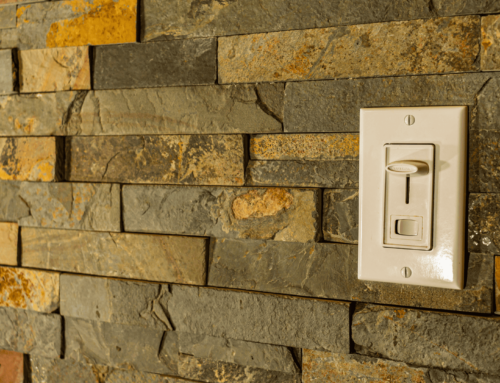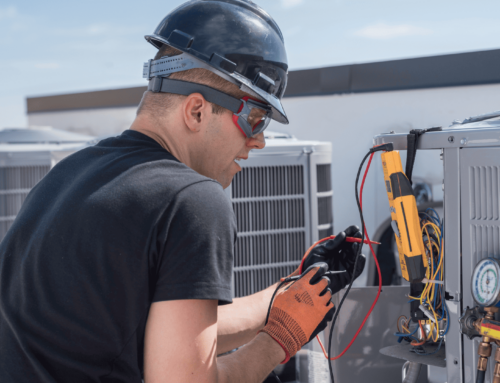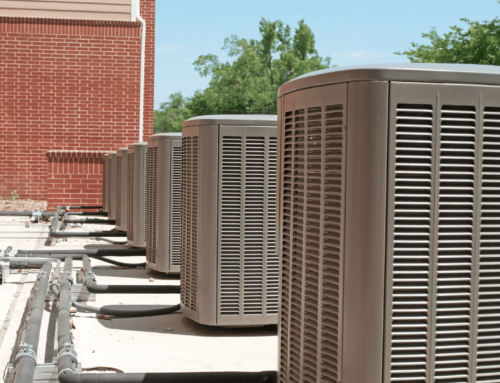
Features of Ductless Air Conditioning
Every air conditioner has a warm side and a cool side. The cool side absorbs heat, while the warm side expels it. In a traditional AC system, both sides are contained within a single unit. As the refrigerant passes through the evaporator coils, it pulls heat from the air going into your home, then dissipates it as it travels through the condenser coils.
However, in a ductless air conditioner, these sides are split in two. The evaporator coils are inside your home, while the condenser coils are outside, joined together by copper piping. When the system is activated, the compressor pumps refrigerant through the pipes to the evaporator inside, which cycles air through the evaporator coils.
The cool air is blown out into the room while the refrigerant continues to the condenser, where a separate fan cycles air through the condenser coils, dispelling the heat from inside. Then the refrigerant moves back to the evaporator, starting the process over again.
Advantages of Ductless Air Conditioning
Ductless air conditioners, also known as mini-splits, are zone cooling systems. Each unit operates independently, controlling temperatures in a single room or part of your house. This means energy is spent only where it’s needed, rather than dispersed through empty rooms.
As a result, ductless cooling systems are more efficient and flexible. Someone on the sunny side of your house can set a lower temperature, while someone on the shady side can set a higher one ‒ whatever makes them comfortable.
What’s more, installing a ductless air conditioner is relatively straightforward. All that’s needed is a small, three-inch hole to accommodate the wiring and refrigerant. And because pumping air through ducts always leads to at least a small amount of energy loss, the long-term costs of ductless cooling systems tend to be relatively low.
Disadvantages of Ductless Air Conditioning
Despite their advantages, ductless air conditioners aren’t a perfect fit for every home. Before making your purchase, take a moment to consider some of their limitations, such as:
- Price. Even though ductless air conditioning generally saves money in the long run, its short-term costs are high. Homeowners have to purchase more equipment, which means they pay more upfront compared to central air conditioning.
- Appearance. To circulate air effectively, evaporators have to be mounted prominently on the wall or ceiling. Though modern evaporators are small, some homeowners still consider them an eyesore.
- Air Quality. Ductless air conditioners have smaller filters, which have to be cleaned often and aren’t as effective at catching dust, pollen, and dander. As a result, people with allergies may prefer central air conditioning instead.
- Size. Because they’re so much smaller than central air conditioners, ductless air conditioning isn’t effective in large homes. It simply doesn’t have the power to lower temperatures in spaces over 2,000 square feet.
- Climate. Their small size also means ductless cooling systems aren’t well suited for extreme climates. Their equipment can’t generate cold air quickly enough to counteract soaring temperatures. They’re most effective in moderate or coastal climates, where temperatures rarely reach the top of the scale.
Features of Central Air Conditioning
Central air conditioners cool every room of your house. The unit is located outside, connected to your home through a series of ducts, and contains both the evaporator and condenser coils. As cool air is generated, it’s pumped into your home and then drawn back through return vents to the central unit, where it’s cooled and released in a perpetual cycle.
Advantages of Central Air Conditioning
Despite the benefits of ductless air conditioning, central air conditioning is still the most popular cooling system in America. It is:
- Convenient. Unlike ductless air conditioners, central air conditioners are controlled by a single thermostat. Rather than adjusting each room individually, homeowners can set one temperature for the whole house, then walk away.
- Cheaper. Installing a central air conditioner costs less than installing a ductless one. All the technician has to do is connect it to your existing ductwork and switch it on. However, if you don’t have any ducts, you’ll have to add some, driving up the price significantly.
- Cleaner. Central air conditioners have stronger filters that trap more contaminants, significantly improving indoor air quality.
- Less Intrusive. The vents responsible for circulating air through your home are almost invisible.
- Powerful. A central air conditioner is capable of cooling almost any space, regardless of its size or location. Even in extreme heat, it’s still effective.
Disadvantages of Central Air Conditioning
While central air conditioners are powerful, they also consume a lot of energy. They’re less efficient as well. Cooling your whole house means pumping air into empty rooms. At the same time, air loses energy as it travels through ducts, so homeowners inevitably wind up paying for cool air they never use. Not to mention central air conditioners have only two speeds: on and off. There is no individual control, so rooms that might need additional cooling may not get it.
Protecting Your Cooling System
Air conditioners are one of the hardest working devices in your home. They run constantly during summer and when they break, repairs can cost hundreds or even thousands of dollars. Don’t let the charges fall on you. Protect yourself with a HomesentialTM warranty.
We cover your air conditioner’s most critical components, including the compressor, coils, motor, and refrigerant. What’s more, our support network ensures a repairman is at your door within twenty-four hours. There are no service fees or deductibles. Coverage costs less than $25 a month, but provides peace of mind all year round. Contact us today to get started!






